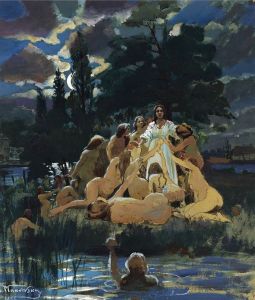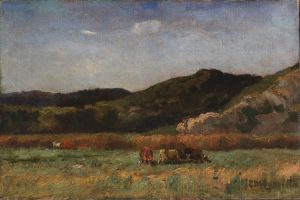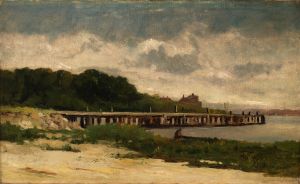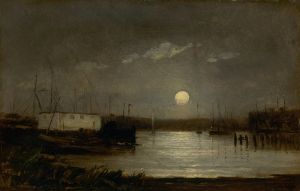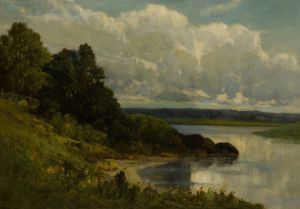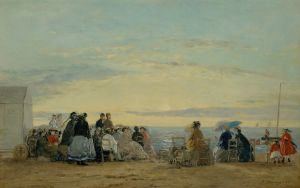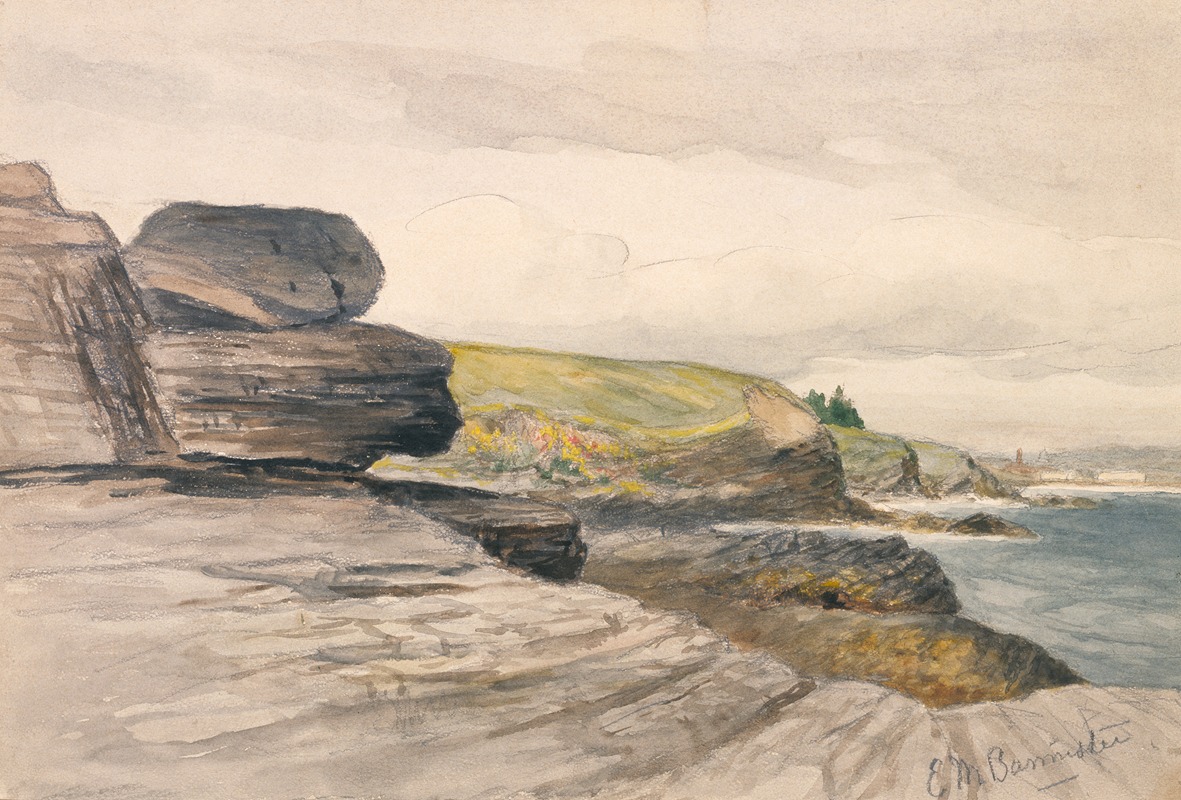
Newport Scene
A hand-painted replica of Edward Mitchell Bannister’s masterpiece Newport Scene, meticulously crafted by professional artists to capture the true essence of the original. Each piece is created with museum-quality canvas and rare mineral pigments, carefully painted by experienced artists with delicate brushstrokes and rich, layered colors to perfectly recreate the texture of the original artwork. Unlike machine-printed reproductions, this hand-painted version brings the painting to life, infused with the artist’s emotions and skill in every stroke. Whether for personal collection or home decoration, it instantly elevates the artistic atmosphere of any space.
Edward Mitchell Bannister (1828-1901) was an African American artist known for his contributions to the American landscape painting tradition in the 19th century. One of his notable works is "Newport Scene," which exemplifies his skill in capturing the serene beauty of natural landscapes.
Bannister was born in St. Andrews, New Brunswick, Canada, and later moved to Boston, Massachusetts. He was largely self-taught, although he did receive some formal training at the Lowell Institute. Despite facing racial prejudice, Bannister achieved recognition for his artistic talents. In 1876, he won a bronze medal at the Philadelphia Centennial Exposition for his painting "Under the Oaks," which significantly boosted his career.
"Newport Scene" is a landscape painting that reflects Bannister's admiration for the Barbizon school, a mid-19th-century French art movement that emphasized naturalism and the beauty of rural scenes. The painting likely depicts a tranquil view of Newport, Rhode Island, a place where Bannister spent a significant portion of his life and found much of his inspiration.
The painting is characterized by its soft, atmospheric quality, achieved through Bannister's adept use of light and shadow. His brushwork is delicate, creating a sense of depth and movement within the landscape. The composition typically includes elements such as trees, water, and sky, arranged in a harmonious balance that invites the viewer into the peaceful scene.
Bannister's work is notable for its departure from the more dramatic and grandiose landscapes of his contemporaries. Instead, he focused on the quiet, everyday beauty of nature, often infusing his scenes with a sense of calm and introspection. This approach aligns with the principles of the Barbizon school, which sought to capture the simple, unembellished beauty of the natural world.
"Newport Scene" is an important piece within Bannister's oeuvre, as it showcases his ability to convey the subtleties of light and atmosphere. His work is also significant within the broader context of American art history, as he was one of the few African American artists of his time to gain recognition and success in a predominantly white art world.
Bannister's legacy continues to be celebrated today, with his works held in various public and private collections, including the Smithsonian American Art Museum and the Rhode Island School of Design Museum. His contributions to American landscape painting and his perseverance in the face of racial barriers have cemented his place as a pioneering figure in the history of American art.
In summary, "Newport Scene" by Edward Mitchell Bannister is a testament to the artist's skill in capturing the serene beauty of natural landscapes. Through his delicate brushwork and atmospheric compositions, Bannister created works that continue to resonate with viewers and affirm his legacy as a significant figure in American art history.





